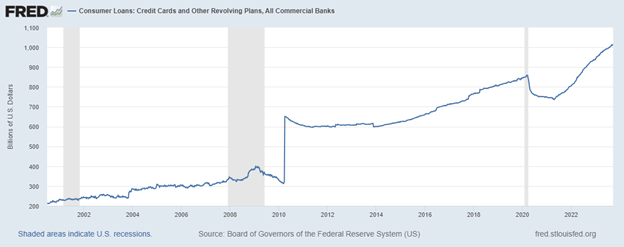By: John Osterweis, Gregory Hermanski, Nael Fakhry
As the second quarter came to a close, the Fed’s elusive soft landing appeared to be within reach. However, inflation resurfaced during the third quarter, substantially complicating the near-term economic outlook.
Mixed Messages
As the economy exited the second quarter of 2023, it appeared that the Fed’s elusive soft landing might actually happen. Persistent rate hikes seemed to be taming inflation without slowing the economy or dramatically raising unemployment, and key trends remained positive during the third quarter. Perhaps most importantly, the August Consumer Price Index (CPI) release reported 3.7% year-over-year inflation. While still elevated relative to the Fed’s 2% target, that rate was far lower than the eye-popping 8.3% in August 2022. Furthermore, year-over-year real Gross Domestic Product (GDP) growth in the second quarter came in at a healthy but not blistering 2.1%, and unemployment rose only modestly to 3.8% in August 2023. Perhaps the Fed’s infamously blunt policy instrument of raising interest rates could work — cooling inflation without derailing the economy.
However, the third quarter also produced a litany of worrying developments from an inflation standpoint:
- Oil prices soared due to tightening supply, with West Texas Intermediate (WTI) climbing from just $70 at the end of June to as high as $91 in the middle of September;
- A long simmering trade battle between the U.S. and Europe on one side and China on the other escalated further;
- The United Auto Workers (UAW) called the biggest strike in decades, with the UAW walking out on several of the Detroit Three automakers’ plants and threatening to widen the strike.
The net effect of significantly higher oil prices, a worsening trade war with China, and a large and potentially widening labor strike could very well mean renewed and persistent inflation. The soft landing that seemed tantalizingly close at the end of the second quarter may now be in jeopardy.
Hawkish Pause
Given the strong economy and risk of persistent inflation, the Fed announced a “hawkish pause” at the end of September. The Fed kept the fed funds rate at an elevated 5.25-5.50%, as was widely expected. However, the Fed’s updated “dot plot” that forecasts future interest rates indicated most Fed participants support hiking the rate once more in 2023 to 5.50-5.75%, and the Fed now anticipates holding interest rates higher for longer due to the risk of elevated and persistent inflation.
As a result, Treasury yields spiked, with the all-important 10-year Treasury trading at 4.6%, the highest yield (and lowest price) since 2007. As one would expect, equities also sold off as the market digested the possibility of persistently high interest rates that raise the cost of capital and increase required returns across the economy.
Soft Landing or Stormy Seas Ahead?
As always, predicting the near-term path of the economy, inflation, and interest rates is fraught with minefields. As we wrote about in our second quarter outlook, virtually every professional economist thought the U.S. was headed into a recession earlier this year, and the question was simply one of timing — whether the economy would go into recession in mid-2023, late 2023, or early 2024. As noted above, however, the economy actually appears quite healthy at the moment.
Therefore, we make economic (and even company-level) projections with great humility, acknowledging that the range of potential outcomes is wide. From our vantage point, a soft landing is still possible, especially if the Fed’s more hawkish projection is merely jawboning, with the intended effect of dampening demand to help tamp down inflation without having to actually raise interest rates. Recent wage gains in excess of inflation and low unemployment mean that the average consumer is actually in decent shape, further greasing the wheels for a potential soft landing. Furthermore, savers’ ability to actually generate a real return on cash for the first time in years — due to higher interest rates — creates added income for well-capitalized companies and consumers. Lastly, companies and consumers who locked in debt at historically low rates the past few years may well be shielded from higher rates for now.
However, we think it is equally possible that elevated interest rates materially reduce demand across the economy and send us into a recession. This possibility becomes more acute the longer high interest rates persist. Thus, time is not necessarily the economy’s friend during a period of high interest rates.
Consider credit card debt, which recently rose to all-time highs of over $1 trillion after plunging over the past two years. Credit card interest adjusts with the market, so consumers with outstanding credit card balances feel a direct impact as rates rise and fall.

Even if the Fed simply maintains rates at current levels, credit card expenses today are much higher than last year because of higher balances. Add in elevated rates and the problem becomes more acute. Consumers will see similar impact for new and floating-rate auto loans, student loans, and mortgages.
Similarly, companies that carry large debt loads well in excess of cash balances have begun to face significant drags on profitability, and we have seen many signs of distress among over-levered private and public companies.
The longer rates remain high, the greater the problem for companies and consumers, especially as refinancing becomes necessary. Exogenous factors like higher fuel and a resumption of federal student loan repayment in October after a three-year hiatus could create added headwinds.
Where to From Here?
The optimist in us looks to the long term and takes comfort in the famous resilience of the American consumer, who drives roughly 70% of economic activity. However, our pessimistic side keeps us paranoid and thinking about the potential risks ahead. We believe owning a portfolio largely comprising high quality, growing companies should serve our clients well given the unclear macro environment. Companies with durable competitive advantages, long runways for growth, strong balance sheets, and good management teams tend to grow earnings, cash flows, and dividends in both strong and weak economies. Purchasing such companies at attractive valuations should prove beneficial to investors.
Conversely, we are especially wary of companies carrying excessive debt given the current macro backdrop, and we are emphasizing companies that should be able to pay growing cash dividends in any environment, underpinned by strong and expanding free cash flow.
We are also now more open to carrying cash in the portfolio as it provides a buffer against volatility while generating a reasonable return due to elevated short-term interest rates. Cash also serves as a reserve, enabling us to take advantage of attractive buying opportunities during market corrections.
We thank you for your continued confidence and are always available should you have questions.
—
Originally Posted October 12, 2023 – Fourth Quarter Equity Outlook
Disclosure: Interactive Brokers
Information posted on IBKR Campus that is provided by third-parties does NOT constitute a recommendation that you should contract for the services of that third party. Third-party participants who contribute to IBKR Campus are independent of Interactive Brokers and Interactive Brokers does not make any representations or warranties concerning the services offered, their past or future performance, or the accuracy of the information provided by the third party. Past performance is no guarantee of future results.
This material is from Osterweis Capital Management and is being posted with its permission. The views expressed in this material are solely those of the author and/or Osterweis Capital Management and Interactive Brokers is not endorsing or recommending any investment or trading discussed in the material. This material is not and should not be construed as an offer to buy or sell any security. It should not be construed as research or investment advice or a recommendation to buy, sell or hold any security or commodity. This material does not and is not intended to take into account the particular financial conditions, investment objectives or requirements of individual customers. Before acting on this material, you should consider whether it is suitable for your particular circumstances and, as necessary, seek professional advice.
Disclosure: Futures Trading
Futures are not suitable for all investors. The amount you may lose may be greater than your initial investment. Before trading futures, please read the CFTC Risk Disclosure. A copy and additional information are available at ibkr.com.





























Join The Conversation
If you have a general question, it may already be covered in our FAQs. If you have an account-specific question or concern, please reach out to Client Services.